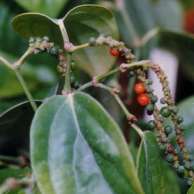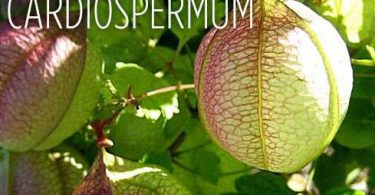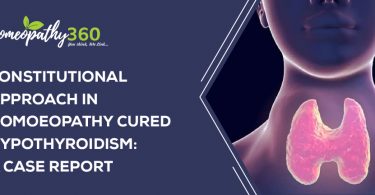The high potency Cs are diluted more times then the LM potency although they receive less succussions at each dilution level of potency. The higher potency Cs like 200c and 1M have a smaller amount of substance, and more commutative numbers of succussions and dilutions than the LM potency.
For this reason, some persons think the LMs are low potency remedies. The LM potency, however, has a much larger dilution ratio that greatly transforms the medicinal qualities of the LM remedies. In footnote f to aphorism 270 of the 6th Organon (O’Reilly edition) Hahnemann suggests the following:
“In earlier instructions, I specified that a whole drop of a liquid in a given potency be added to 100 drops of wine spirit for higher potentization.”But meticulous experiments have convinced me that this proportion of the dilution medium to the medicine being dynamized (100:1) is much too narrowly limited to develop the powers of the medicinal substance properly and to a high degree, by means of a large number of succussions, unless one uses great force.”
The Founder realized that continuing to increase the number of dilutions and succussions of the centesimal potency did not fill the desired therapeutic lacuna in his new healing art. He came to see that the 1 to 100 dilution ratio is limited by its smaller dilution factor so he began to experiment with new larger dilution ratios rather than raising the C potency to higher and higher degrees.
He also noticed that when strong succussions were used in such a small dilution medium as the centesimal 1 to 100 ratio it makes aggressive medicines prone to quick aggravation and unproductive secondary curative effects in the long run.
“With a ratio of the dilution medium to the medicine as low as 100:1, very many impacts by means of a powerful machine, as it were, are forced in. As a result, medicines arise that, especially in the higher degree of dynamization, almost instantaneously but with stormy – indeed dangerous – intensity, impinge on patients (especially the delicate ones) without bringing about an enduring, gentle counter-action of the life-principle.”
Once again we see the importance of the balance of the primary action of the remedy and curative response of the vital force. When too many dilutions and strong succussions have been forced into the higher centesimal potencies it makes medicines that are prone to aggressive primary actions and strong aggravations that do not produce an “enduring gentle counter action of the life principle”.
Such furious or prolonged aggravations are to be avoided at all cost as they disrupt the natural symptom pattern, waste vitality, and complicate the cure.
The LM potency, on the other hand, is given in the smallest liquid dose so it produces a mild primary effect and a long enduring gentle counter action of the vital principle.
During the period of the 5th Organon (1833) Hahnemann used the unmodified liquid dose made up each time from 1 or 2 poppy seed size pellets. In aphorism 29 of the 5th Organon Hahnemann described how the centesimal method works. He wrote that the similar homoeopathic remedy “pushed into the place of the weaker natural disease” against which the instinctive vital force was “compelled to direct an increased amount of energy”.
The idea of pushing into place and compelling the vital force to increase its energy against the remedy is based on the phenomena of the homoeopathic aggravation. The methods of the 4th and 5th Organon are based on a crisis-like aggravation in contrast to the gentle medicinal solution and the non-invasive LM method.
Aggravation in the 5th edition (1833)
The centesimal model of cure still involves the idea of crisis where aggravation of symptoms compels the vital force to increase energy in order to remove the remedy disease and begin convalescence.
The idea of crisis as an integral part of the cure is very ancient. This is before Hahnemann discovered the non-invasive method of the LM potency, the medicinal solution, and the split-dose. Vide aphorism 279 of the 5th edition (1833).
“The pure experience shows UNIVERSALLY…A DOSE OF THE HOMOEOPATHIC SELECTED REMEDY CAN NEVER BE PREPARED SO SMALL THAT IT SHALL NOT BE STRONGER THAN THE NATURAL DISEASE, AND SHALL NOT BE ABLE TO OVERPOWER, EXTINGUISH, AND CURE IT, AT LEAST IN PART, AS LONG AS IT IS CAPABLE OF CAUSING SOME, THOUGH BUT A LIGHT PREPONDERANCE OF ITS OWN SYMPTOMS, OVER THOSE OF THE DISEASE RESEMBLING IT (slight homoeopathic aggravation, aph. 157-160) IMMEDIATELY AFTER ITS INGESTION.” [Capitals by DL.]
The need for aggravation was also stressed as an integral part of cure in aphorism 282.
“The smallest possible dose of homoeopathic medicine capable of producing only the very slightest homoeopathic aggravation, will because it has the power of exciting symptoms bearing the greatest possible resemblance to the original disease (but yet stronger even in the minute dose), attack principally and almost solely the parts in the organism that are already affected, highly irritated and rendered excessively susceptible to such a similar stimulus”.
Hahnemann goes on to say that this medicinal disease alters the vital force that rules the susceptible parts to a state of very similar artificial disease “so that the living organism now suffers from the artificial medicinal disease alone, which, from its nature and owing to the minuteness of dose, will soon be extinguished by the vital force that is striving to return to the normal state”.
The idea of a crisis-like aggravation compelling the vital force to increase its energy was part of the old dry dose and unadjusted liquid dose method of the 1830s.
In the 6th Organon Hahnemann replaces the model that includes the necessity of a aggravation-like crisis with the idea that the dose can never be made so small that it cannot overcome the disease without aggravation.
In the LM model aggravation at the start of treatment is a sign of too large a dose or too high a potency and unnecessary repetition of the remedy. Vide aphorism 279 of the 6th Organon (1842).
“This pure experience now shows UNIVERSALLY that:1. if considerable corruption of an important [vital organ] organ does not obviously lie at the base of the disease (even if the disease is chronic and complicated) and
2. if during treatment, all other foreign medicinal impingements on the patent have been withheld, then THE DOSE OF A HOMOEOPATHICALLY CHOSEN , HIGHLY POTENTIZED REMEDY FOR THE BEGINNING OF TREATMENT OF AN IMPORTANT (ESPECIALLY CHRONIC) DISEASE, AS A RULE CAN NEVER BE PREPARED SO SMALL THAT IT WOULD NOT:
- BE STILL STRONGER THAN THE NATURAL DISEASE,
- BE ABLE, AT LEAST IN PART, TO OVER-TUNE THE NATURAL DISEASE,
- EVEN BE ABLE TO EXTINGUISH A PART OF THE NATURAL DISEASE IN THE FEELING OF THE LIFE PRINCIPLE, THUS PRODUCING A BEGINNING OF THE CURE.” [Capitals by DL.]
All of the references to the need for crisis-like aggravation to push the remedy in place of the natural disease and compel an increase of energy of the vital force are removed from the 6th Organon. There is no need to force, push, compel, or aggravate in the non-invasive LM method of the 1840s.
This represents a shift in the homoeopathic paradigm from compelling through aggravation to a completely non-invasive method of posology. In Hahnemann’s advanced methods there is no need of aggravations, crises, over medication, antidotes, long periods of waiting, or any excess counter reactions.
All these side effects have been removed from the homoeopathic system of the 1840s.
The old dry dose method is like a roller coaster ride as first comes the homoeopathic remedy, then comes waiting out the crisis-like aggravation, then comes waiting out any improvement, and then comes waiting for the relapse. Then the dry dose is given again and the whole “up and down start and stop process” begins all over again.
The idea that aggravation is necessary is common among 4th and 5th Organon homoeopaths, especially those who use too many dry pills as a dose. This is because too many pills of the high potency centesimals can cause aggravations that can run for days, weeks, and months.
Hahnemann noted clearly that too large a dose (too many pills) will cause an aggravation even if the potency is correct. Many consider aggravations necessary because the idea of the need for aggravation is over stressed in the Homoeopathy of the 1820’s and 1830s.
To overcome these side-effects Hahnemann used the medicinal solution of the LM potency made from 1 poppy seed size pill in a minimum of 7 tablespoons. From this solution 1, 2, or 3 teaspoons was stirred into a glass with 8 to 10 tablespoons of water and 1, 2, or 3 teaspoons was given to the patient.
In this method the size of the dose is greatly reduced as the potency is gradually increased so that the vital force never receives the same exact dose twice in succession. In this way, the vital force can receive the single dose or a series of doses in medicinal solution without the aggravations witnessed in the dry or unmodified liquid dose. In this way, we can speed the cure to one half, one fourth, or less than the time of the old method.
Author: David Little





